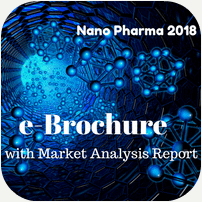
Edouard Alphandéry
Sorbonne Universités, France
Title: Development of non-pyrogenic magnetosome minerals coated with poly-L-lysine leading to full disappearance of intracranial U87-Luc tumors in 100% of treated mice using magnetic hyperthermia
Biography
Biography: Edouard Alphandéry
Abstract
Magnetic hyperthermia was reported to increase the survival of patients with recurrent glioblastoma by seven months. This promising result may potentially be further improved by using iron oxide nanoparticles, called magnetosomes, which are synthesized by magnetotactic bacteria, extracted from these bacteria, purified to remove most endotoxins and organic material, and then coated with poly-L-lysine to yield a stable and non-pyrogenic nanoparticle suspension. Due to their ferrimagnetic behavior, high crystallinity and chain arrangement, these magnetosomes coated with polylysine (M-PLL) are characterized by a higher heating power than their chemically synthesized counterparts currently used in clinical trials. M-PLL PLL-enhanced antitumor efficacy was demonstrated by administering 500 to 700µg in iron of M-PLL in to intracranial U87-Luc tumors of 1.5mm3 and by exposing mice to 27 magnetic sessions of each lasting 30 minutes, during which an alternating magnetic field of 202kHz and 27mT was applied. Treatment conditions were adjusted to reach a typical hyperthermia temperature of 42°C during the first magnetic session. In 100% of treated mice, bioluminescence due to living glioblastoma cells fully disappeared 68 days following tumor cell implantation (D68). All these mice, which were all still alive at D350. Histological analysis of their brain tissues revealed an absence of tumor cells, suggesting that they mice were fully cured. In comparison, antitumor efficacy was less pronounced in mice treated by the administration of IONP followed by 23 magnetic sessions, leading to full tumor bioluminescence disappearance in only 20% of the treated mice.

